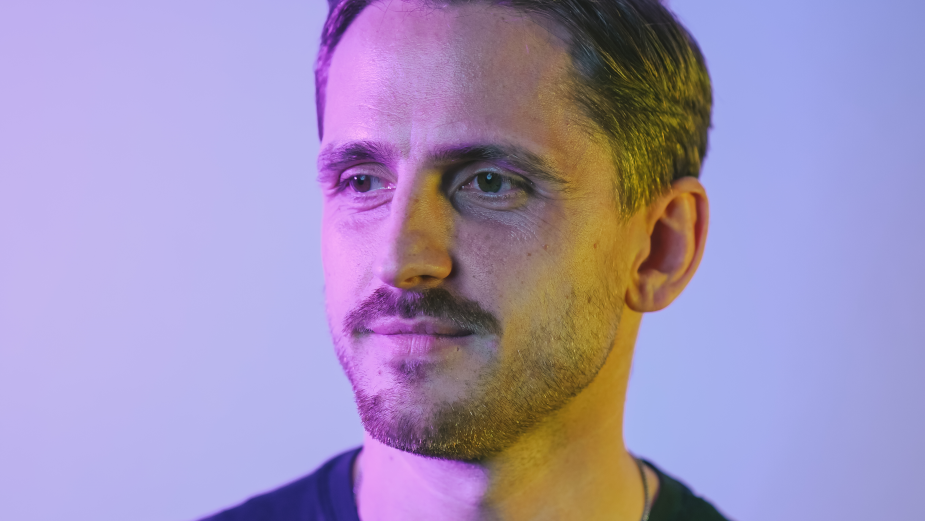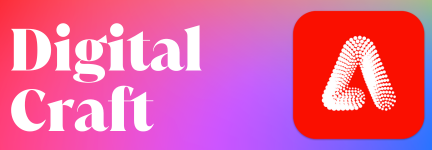
Meet the Technologists: John Martinelli

As co-founder and head of production at Solarflare Studio, John Martinelli now sits at the centre of a creative technology studio with a mission to hack the human experience.
Working with the latest frontier technologies to build experiences that allow its clients to discover, explore and connect, the studio creatively forges deeper relationships between brands and their consumers. The team John works with stresses that they’re tech-agnostic – untethered to a single technology, leaving them free to innovate, iterate and offer clients bespoke solutions and limitless world-first showstoppers.
Solarflare Studio has worked on projects like creating a true digital racquet with Wimbledon's Virtual Hill experiences, provided everyday athletes the ability to see the impact of movement on their minds with ASICS, and even put users in the driving seat of a life-sized Lego Technic Lamborghini Sián FKP 37.
LBB’s Alex Reeves caught up with John to understand him and the studio’s approach to creative technology.
LBB> I found your previous 'Good, the Bad and the Ugly' piece on LBB really useful for thinking about different tech and how to best use it. How do you situate that kind of thinking in what Solarflare does?
John> Great question straight off the bat.
It's definitely an angle that we discuss as a team with most things we do. This goes for the client work we're passionate about and culturally what the team likes to discuss and internally build their knowledge upon. For instance, we run Spark Sessions, a bi-weekly innovation research space, where we discuss, debate, and think creatively about the latest within the industry. This framework allows the studio to openly review both conceptual and technological aspects of campaign experiences and discoveries. A good reference to this would be how overnight, Ethereum has reduced its carbon footprint by over 99.99% and what this means not only for the world but also for individual projects that may require blockchain / NFT etc.
We're also actively keen as a company on driving 'Tech For Good' with topics that focus on wellness and mindfulness, which comes across in some of our internal labs and client work, for instance, our ongoing project work with ASICS.
LBB> When it comes to R&D, what are your focuses and why?
John> The team that we have is so dynamic in terms of our backgrounds within the tech space. We have so many passions that we all bring to the table, which we have captured from our past experiences as well as interests. For instance, myself and Helen [Bellringer] (creative director) have a strong background in music, a number of the directors have backgrounds in 3D printing, and even jewellery making. We try to take our passions and also look to integrate this with what we think adds value as a company to know about as well - working on upcoming trends / how we can hack any software/hardware to be subject matter experts.
LBB> Can you tell us about your personal background in tech and music, and how that feeds into what you do as head of production now?
John> So I started off in music at a relatively young age when the MySpace boom happened. It was such a great time for music, as well as having a pretty solid local community in London. That's how I got into heavy metal / punk music. Pretty much everyone I mention this to is surprised that I was in a thrash metal band and that we got to play some pretty amazing shows around the world, which was a great experience.
I realised that trying to be a rockstar wasn't that sustainable, so I thought I had to combine my passion with a more 'traditional' career somehow. I also had a fear that I would be that guy wearing a leather jacket in some grotty pub playing Metallica cover songs, so I thought… best try and move on.
So I begrudgingly took up sound design at Ravensbourne Uni, which was perfect as it was literally on my doorstep. It was a bit of a mixed bag as I was heavily into the more program-driven type of work, using Pro Tools, Logic, and other systems like that rather than a huge part of the course which was radio. I knew I wasn't going to be Chris Tarrant any time soon, so I gravitated more to that side of learning, which helped as I didn't have to speak to humans too often.
From there, I juggled playing shows whilst working in TV delivery as my first real job, which taught me the ways of working collaboratively with a global company. I was a traffic manager, supporting the distribution of TV commercials globally, which was pretty fun. I got familiar with all the large agencies in the game, and that's when I really started noticing content creative within the space.
I needed a new challenge and jumped into augmented reality at [computer animation company] Blippar, which back then was a very small team. I loved the dynamic of the start-up mentality vs the more corporate style of the previous company and definitely enjoyed some of the perks. I was overseeing the production of the London studio, as well as experiences in Turkey, Japan and also the US at times, and it got me familiar with the technology and how it helped accelerate the use of AR within tech. There was something truly amazing about this technology at that moment in time and I’ve been fully invested in that side of the world ever since. I then progressed into further XR, moving into larger activations that took on a full 360-campaign output (digital and physical with live event management), which I very much enjoyed logistically in organising and delivering.
Flash forward several years, and Solarflare Studio, which I set up with colleagues I had the pleasure of working with before, has just had its third anniversary!
LBB> The distinctions between traditional agencies, digital agencies, film production companies and 'digital' production companies have somewhat broken down over the past decade or so. Where do you place what Solarflare does on that spectrum, in terms of what your collaborations with different partners look like?
John> We actually vary quite a bit in our collaborations, which goes hand in hand with the type of work that we do. We classify ourselves as a tech-agnostic studio which means that we work on a number of different things – but the common thread is that we get to work with cool clients and cool tech. Certain agencies now have in-house tech departments, and I would say that the 'metaverse' boom has definitely accelerated the need to know about this tech space more so than before. We sit nicely in this space, which means we can consult to build up our clients knowledge on all things tech, but also collaborate with agencies from the concept and pitch stage so that their ideas can be brought to life as best as possible.
LBB> What are you recently most proud of and why?
John> Project-wise it definitely has to be the work that we collaborated with ASICS, Golin and Unit9 on - investigating what happens to our mental state when people pause their regular exercise routines for just one week. We captured multiple data sets, generating a pretty epic data visualisation piece that integrated EEG readings with emotional and cognitive behaviour from users. I was pretty happy with how that turned out visually, as well from a narrative perspective, as it captures the type of work that we love working on. We've also received a number of awards across our projects this year, which is great to see our work being recognised!
LBB> What sort of brief do you get most excited about?
John> There's something special when working with real-time content. That can be anything to do with data visualisation, using intricate particle systems/point cloud data, or just working on amazing VFX within our experiences. When this is integrated with gestural control and body tracking, then these are the concepts that excite me as you can really leverage more the multi-sensory elements of a concept and story.
LBB> A lot of the work you do requires very specialised expertise. How do you navigate the talent market?
John> It's an interesting one! As we're tech-agnostic, it means that we require a big range of skills within the studio to keep ourselves at the forefront of the tech. The team tends to have a wide range of skills as well as ensuring that we can focus on core specialties. For instance, we see ourselves becoming more involved with Unreal Engine (especially now UE5 has been released) when it comes to the more cinematic content we create, with Unity being more our core development skill set. However, the team is always playing around with other software we are interested in, but most importantly, what works best for the brief and technical output. For instance, we've been working on a number of WebGL experiences lately, as well as audio-reactive and real-time generative art pieces, which lends itself to other ways of development.
Outside of our core team, I’m constantly being inspired by creatives, artists and developers I come across. There's amazing talent globally, and I make sure to get in touch to see how we can work together - if not now, certainly in the future.
Most importantly, our 'industry' is now being taught at universities, with students finishing their masters with really impressive knowledge of coding languages, gaming engines, Adobe Suite and 3D skills.
That would have been good back in the day right? Instead of spending my time chatting absolute garbage for a made-up radio show…












